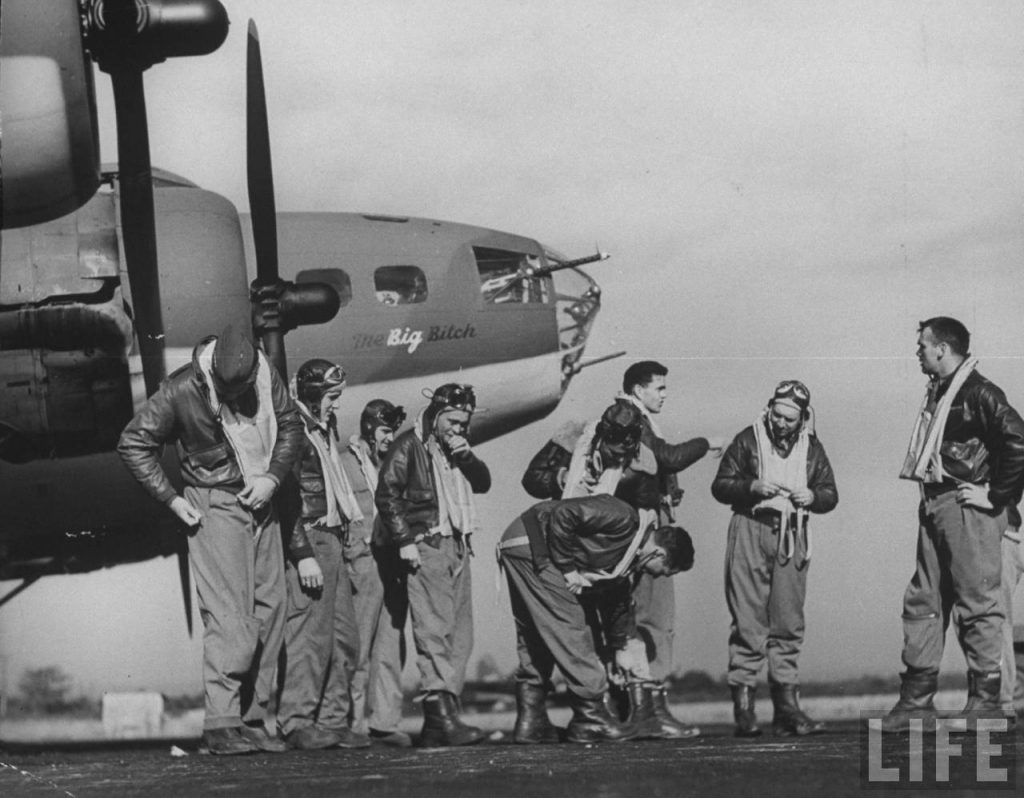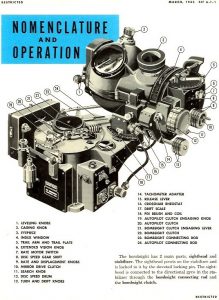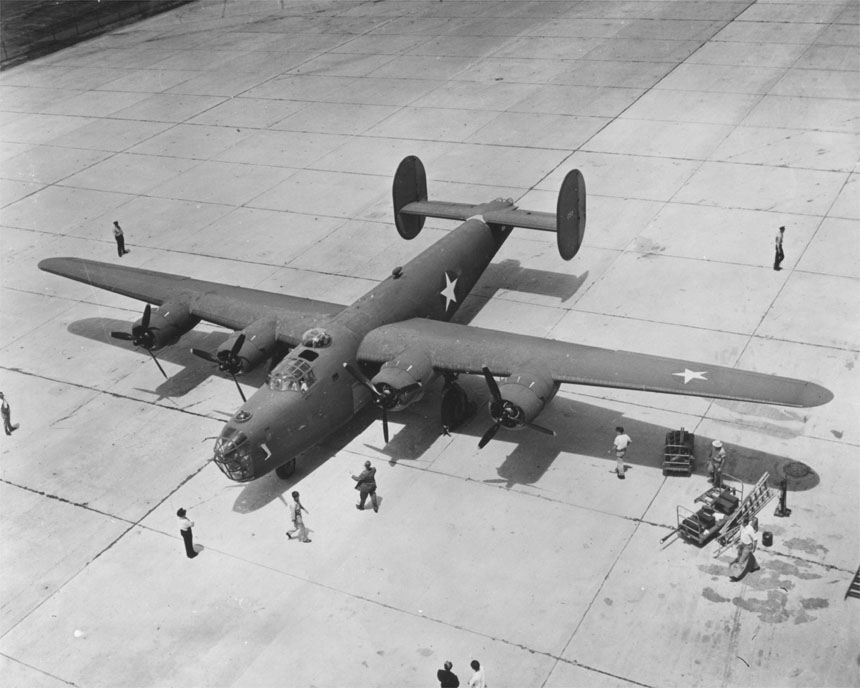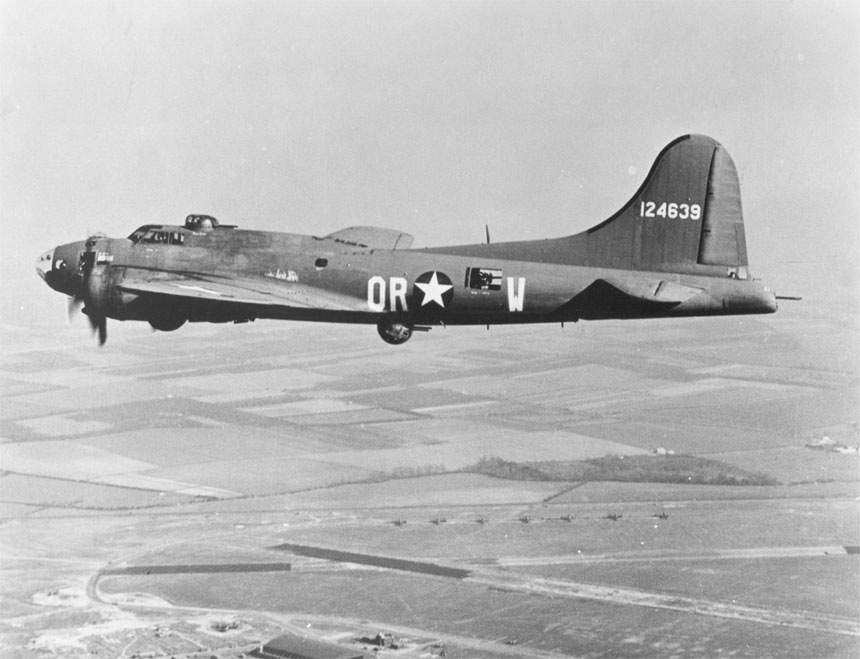
During the 1930s, the United States Army Air Corps developed into a major branch of the U.S. Army, and focused on strategic bombing as its major contribution to a future war. But Air Corps leaders believed that precision bombing was possible through daytime attacks using well-armed bombers, good formation flying, and a new aiming instrument that was really a mechanical computer. The U.S. Army and its Air Corps were small, but American industrial potential was great, and U.S. airmen assumed (correctly) that in wartime, the U.S. could produce fleets of heavy bombers.

Air Corps officers believed that indiscriminate bombing of cities was wasteful and perhaps immoral. Industrial societies, Air Corps theorists pointed out, had particular vulnerabilities: factories, refineries, railroad yards, and other industrial targets that provided essential resources and services to the entire economy. In 1933 a professor at the Air Corps Tactical School chose as an example a special lubricant that U.S. railroads needed for locomotives, but which was produced in only a few refineries. If these refineries were destroyed, he reasoned, U.S. railroads, and the economy they served would be crippled. An Air Corps study in 1934 theorized that an enemy could make New York City uninhabitable by just bombing 17 transportation, waterworks, and electric power targets.
And what if this could be done without heavy losses among civilians? Though tragic, some civilian deaths were unavoidable. But by targeting “pressure-points” in the industrial and economic fabric of societies, an air force might avoid the indiscriminate killing of noncombatants. “Direct attack of the civil populace,” An Air Corps Tactical School lesson plan instructed, “is rejected as an air objective due to humanitarian considerations.”
Just before the war, the Army Air Corps got a new name, the United States Army Air Force (USAAF), and had planes and bombsights they felt were ideal for precision bombing. The new four-engined B-17 and B-24 bombers bristled with machine guns for self-protection against fighters. Both planes carried the Norden Bombsight, an optical instrument with a mechanical computer that attempted to quickly factor in the plane’s speed and direction, and altitude, together with local crosswinds. Air Corps leaders believed the Norden Bombsight enabled bomber men put 40% of bombs on the ground within 1500 feet of the aiming point, and 90% within a mile. It seemed that American industry and know-how had produced the ingredients for a war-winning strategic bombing campaign.
Allied Heavy Bombers
The U.S., Great Britain and Canada manufactured fleets of heavy bomber aircraft to carry out the Combined Bomber Offensive. At that time, these were quite big, sophisticated, and expensive. Building these planes, training their crews, and supporting their squadrons was a major piece of the total Allied war effort in World War II.
The RAF’s most famous World War II bomber is the Avro Lancaster. Lancaster crews included a pilot, specialists like navigators and radiomen, and several gunners, for a total of seven men. Lancasters could carry four tons of bombs to targets in Germany. British, Canadian, Australian, Poles, and others flying with the RAF crewed Lancasters in the combined bomber offensive. The bottom of Lancasters were usually painted black, to camouflage them against the night’s sky.
The B-24 “Liberator” was a USAAF heavy bomber capable of carrying three tons of bombs to targets deep inside the Third Reich. B-24s typically had a crew of ten men: two pilots, a navigator, a bombardier, and six gunners. The B-24 wasn’t as sturdy as the B-17, but had longer range (800 miles was typical), a heavier bomb load, and more room for the crew. The United States produced over 19,000 B-24s during World War II.
The B-17 “Flying Fortress” is the most famous U.S. heavy bomber of the war. B-17s had a crew of ten men: two pilots, a navigator, a bombardier, and six gunners. On a typical mission to Germany, the B-17 carried at least two tons of bombs over 700 miles. Although the B-24 had a greater bomb load and range, the B-17 was tougher, and could absorb more enemy fire. The United States produced over 12,000 B-17s during World War II.
In December 1941, the United States joined the allied powers in the war against fascist Germany, Italy, and Japan. In the following year, the U.S. Army Air Force assembled a big fleet of bombers based in Southern Britain and North Africa, that gradually joined the bombing over Nazi Europe. By then the British considered daylight bombing too dangerous, and said so to USAAF leaders in 1942. But the U.S. airmen persisted in trying to wreck Nazi industrial resources in daylight bombing missions, and began conducting regular raids against Germany in May 1943. Allied airmen agreed to a strategy of “round the clock” bombing: RAF area-bombing cities by night, USAAF bombers conducting precision attacks against key industrial targets by day.



